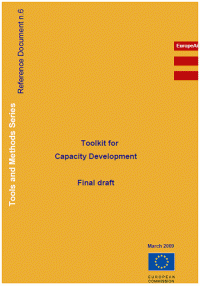
Who should call meetings, lead capacity assessments or mobilise consultants and monitor their progress? Get help to find the right answer to these questions and more in another tool from the Toolkit for Capacity Development.
All too often, donors end up taking the driver’s seat when it comes to supporting capacity development processes. So they call meetings, draft terms of reference, conduct assessments (or their consultants do it), draft project documents and – actually quite unsurprisingly – end up feeling that they have to push and push and push to get anything done.
Instead of fostering ownership and adapting their support to the “capacity to develop capacity” of their partners, donors easily undermine whatever ownership there was in the first place. All well intended – but the road to hell is, as the saying has it, paved with good intentions.
The Toolkit for Capacity Development includes Tool 3, which is designed to help getting roles and functions right between donors and country partners. It goes through a number of the functions that are normally part of CD processes – both before they are launched (“upstream”) and during implementation (“downstream”) – and invites those using the tool to discuss who should do what – and the implications surrounding choices on commitment and efficiency, respectively.
The tool is not prescriptive – there is no standard right answer. But it may be helpful to break ingrained patterns and force parties to reconsider who should do what rather than just do as they did the last time.
After all, last time may not have been good enough!
Log in with your EU Login account to post or comment on the platform.